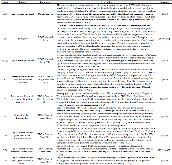Impact of Fractionation Process on the Technical and Economic Viability of Corn Dry Grind Ethanol Process
- Univ. of Illinois at Urbana‐Champaign, Urbana, IL (United States)
- State Univ. of New York College of Environmental Science and Forestry, Syracuse, NY (United States)
Use of corn fractionation techniques in dry grind process increases the number of coproducts, enhances their quality and value, generates feedstock for cellulosic ethanol production and potentially increases profitability of the dry grind process. The aim of this study is to develop process simulation models for eight different wet and dry corn fractionation techniques recovering germ, pericarp fiber and/or endosperm fiber, and evaluate their techno-economic feasibility at the commercial scale. Ethanol yields for plants processing 1113.11 MT corn/day were 37.2 to 40 million gal for wet fractionation and 37.3 to 31.3 million gal for dry fractionation, compared to 40.2 million gal for conventional dry grind process.
- Research Organization:
- Center for Advanced Bioenergy and Bioproducts Innovation (CABBI), Urbana, IL (United States)
- Sponsoring Organization:
- USDOE Office of Science (SC), Biological and Environmental Research (BER)
- Grant/Contract Number:
- SC0018420
- OSTI ID:
- 1562291
- Journal Information:
- Processes, Vol. 7, Issue 9; ISSN 2227-9717
- Publisher:
- Multidisciplinary Digital Publishing Institute (MDPI)Copyright Statement
- Country of Publication:
- United States
- Language:
- English
Web of Science
Similar Records
Technical and economic feasibility of an integrated ethanol and anthocyanin coproduction process using purple corn stover
Increasing ethanol yield through fiber conversion in corn dry grind process











